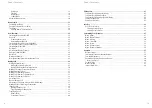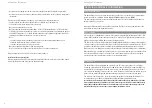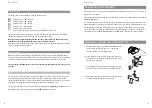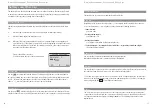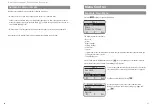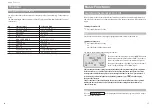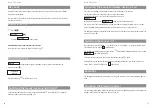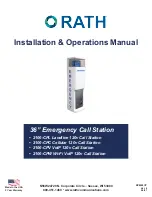
3
2
Using Your Telephone
Overview and Basic Information
General Information
The Aastra Phone 142 is a telecommunications device that you can operate on a communications
system specified as compatible with an OpenMobilityManagement system (OMM).
The newly designed menus enable easy handling and fast access to the many functions and fea-
tures provided by your system.
Make yourself familiar with your telephone equipment. You’ll discover many new functions that
make communication and organization easier.
DECT and GAP
Your handset uses a digital radio connection in accordance with the Digital Enhanced Cordless Tele-
phone (DECT) standard for the connection to the base station. This digital channel guarantees the
highest voice quality possible without static or background noise.
The Generic Access Profile (GAP) and the DECT standard define methods according to which digital
cordless telephones can establish connections. As the GAP standard is not manufacturer-specific, it’s
possible to combine base stations and handsets from different manufacturers with one another.
Basic functions (i.e., making and receiving calls) are always possible when using these combinations.
Other functions (e.g., the display of phone numbers or connection states) may not be available if you
use other manufacturers’ devices, however. For more information, please refer to the user guide
provided by the other manufacturer or ask your system administrator.
Memory Card
The Aastra Phone 142 is equipped with a memory card. This stores your phone's local settings
(including a local telephone book with up to 100 entries) and its identification number (IPEI). This
means that if you exchange phones with someone else, you simply take your memory card out of
your own phone and plug it into the other one. You will then have all the data you need in the new
phone and can make calls right away without having to register it on the base station again.
The memory card is inserted in a slot in the battery compartment underneath the batteries. For
security purposes, your phone is fitted with an additional battery compartment lock.
In some models, the memory card has already been inserted in the factory. If the memory card has
been supplied separately, you will have to insert it in its slot yourself. This is located in the battery
compartment underneath the batteries. For instructions on how to insert the memory card in the
Aastra Phone 142, please refer to the section entitled "Installation" below.
Using Your Telephone
• Areas where the equipment can be covered, its ventilation impaired or liquid can get inside.
• Areas where there is excessive dust and areas subject to vibration, shock or extreme temperature
fluctuations.
Please note the following when setting up, connecting, and using your telephone:
• Lay the cables where they cannot be walked on or tripped over, causing injury.
• Connect the cables to the appropriate sockets only.
• Only connect authorized accessories.
• Only use the plug-in adapter supplied (ID No.: 4512132 Continental Europe / 4513788 for UK).
• Scientific research has shown that in certain cases, medical equipment can be influenced by oper-
ational DECT telephones. You should therefore adhere to any regulations applicable in medical
institutions regarding the operation of cordless telephones.
• Never
- open the charger cradle or handset yourself (except for the battery compartment cover)
- touch the contacts with sharp or metallic objects
- carry the charger cradle by its connector cables.
• Only use a slightly damp cloth to clean your telephone.
• Do not operate your telephone in areas where there is any risk of an explosion.
Keep the handset and accessories out of reach of small children.
Note for the users of hearing aids
Before using the handset, users of hearing aids should note that such aids can receive radio signals,
which, if powerful enough, may cause an unpleasant hum.
Содержание 142
Страница 1: ...Aastra Phone 142 User Manual ...



